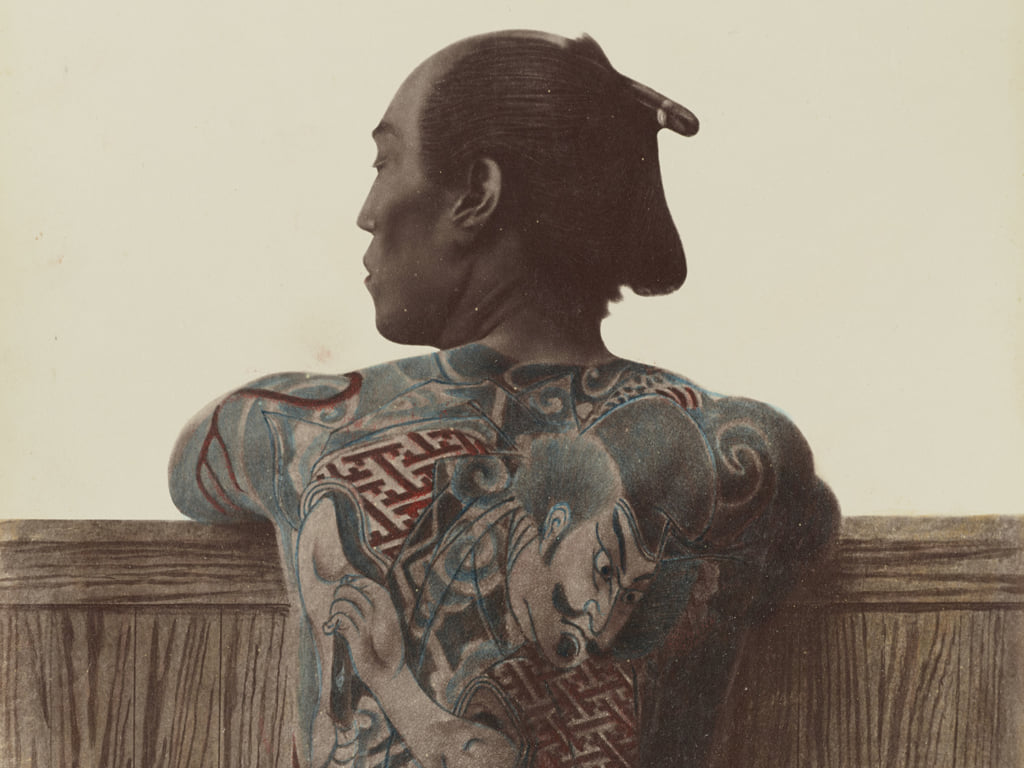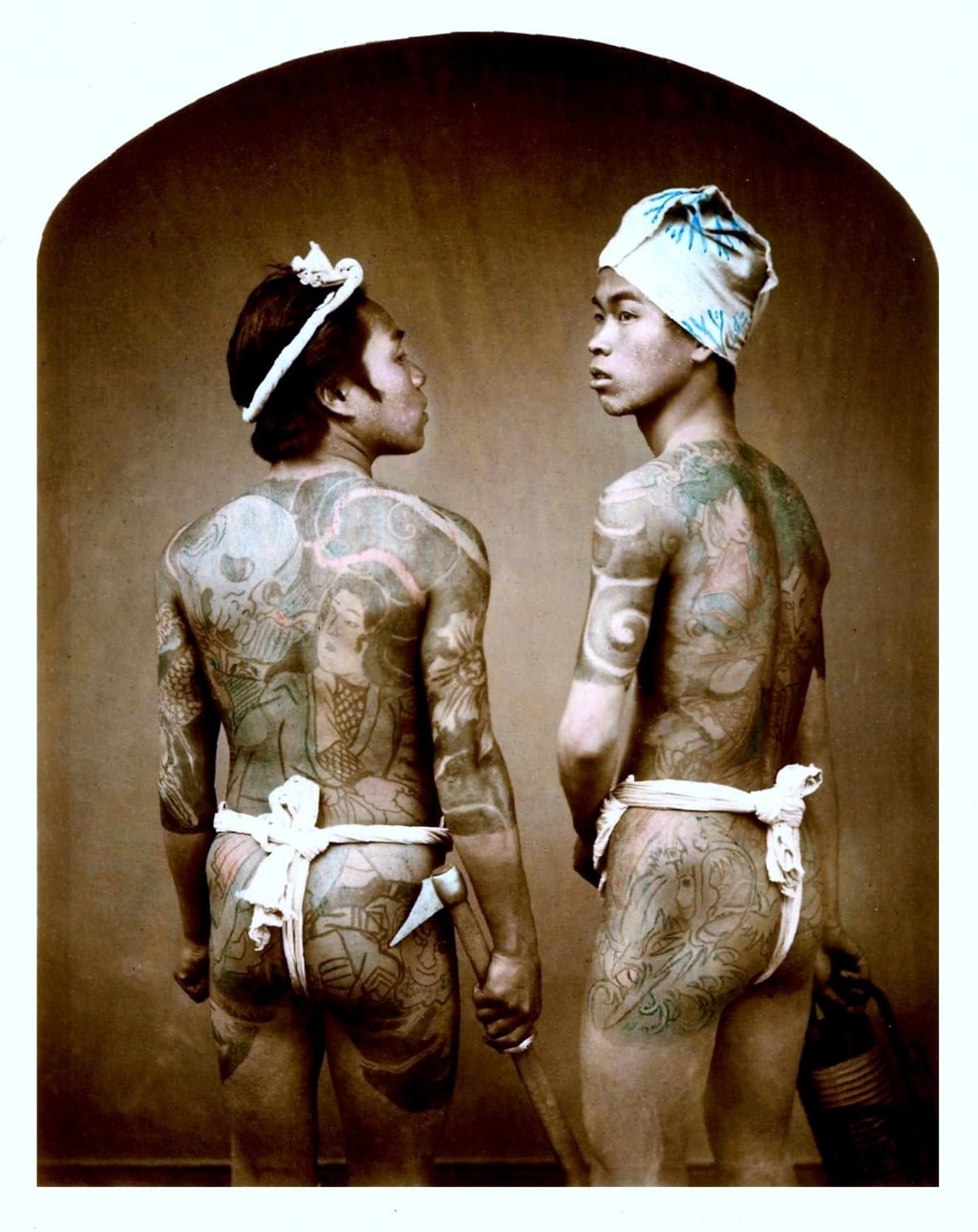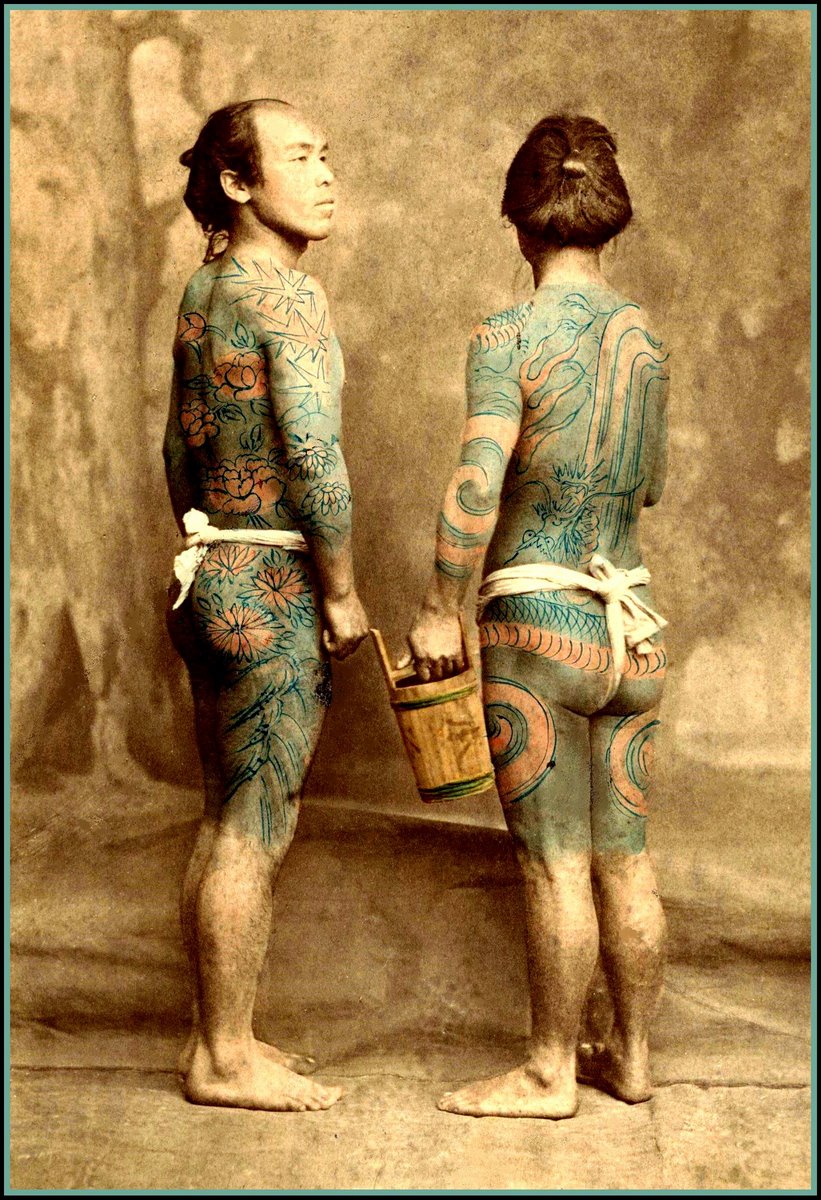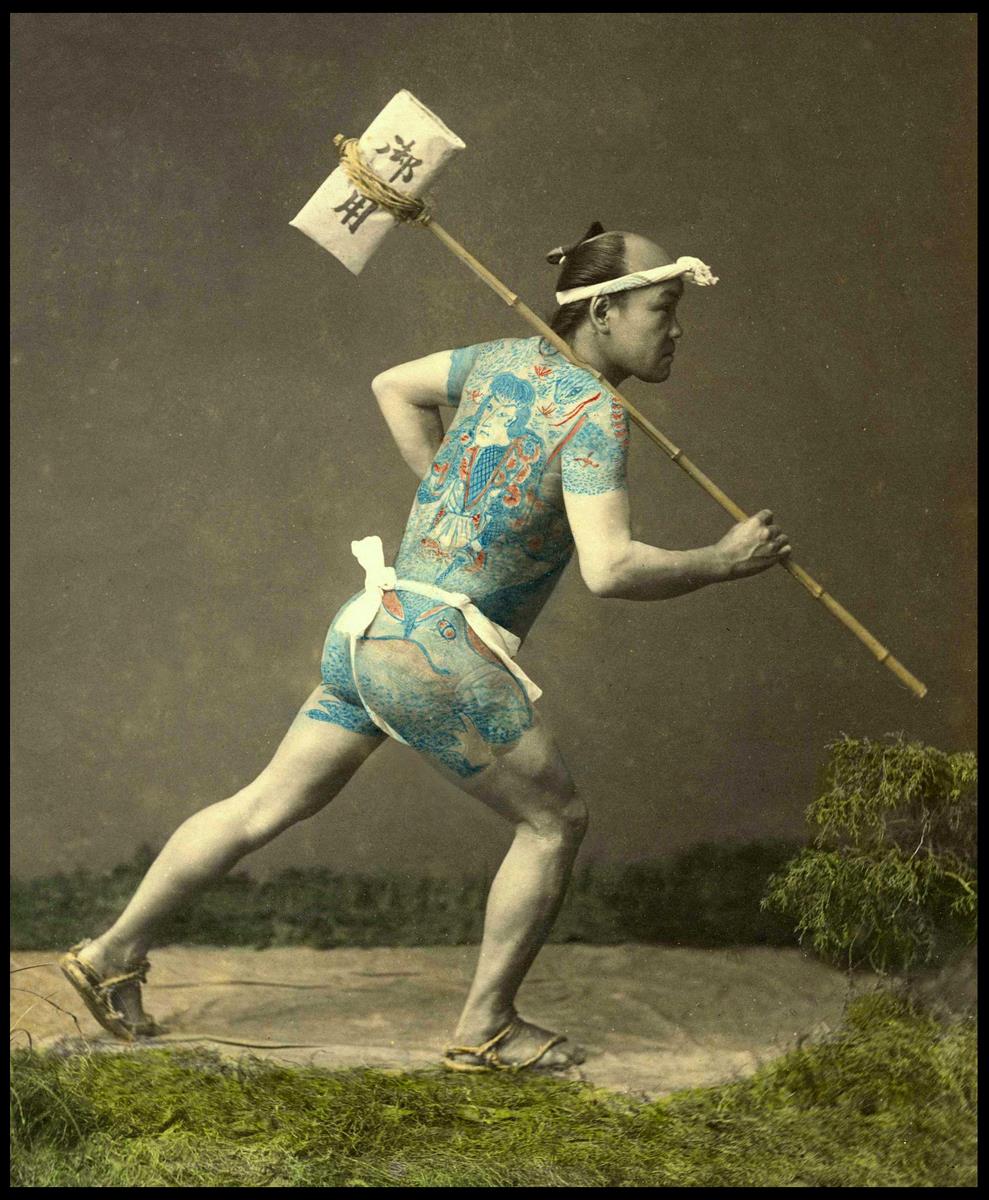Colour Photos of Yakuza Tattoos from the Meiji Period
19th-century photographs have captured the usually hidden tattoos that covered the bodies of the members of Japanese organised crime gangs.

‘Japanese Tattoo’; Kusakabe Kimbei or Baron Raimund von Stillfried.
These photos, taken when photography arrived on Japanese soil between the mid- and late-19th century, show the tattoo-covered skin of the yakuza. Often captured in profile or from behind to avoid being recognisable, these men proudly display their irezumi, the Japanese name given to tattoos that cover large areas of the body.
Viewers can note the multitude of motifs, their subtle encroachment onto the bare skin, the surface area of which decreases over time, as well as the colours – blue, red and green – added to the photograph afterwards, by colourists who apply paint to the photo with a delicate hand, enlivening the dragons, flowers, and creatures in human form with colour.
Tattoos as a mark of unity
These motifs aren’t chosen at random or purely for their aesthetic value. The yakuza select them based on their meaning: the carp represents courage, the dragon symbolises wisdom, the tiger embodies strength, the snake is a symbol of healing… The members of a clan often have the same tattoos, with a strict requirement: that they are not visible in everyday life. Certain parts of the body, like the calves, wrists, hands, neck, and face, remain unadorned, with any tattoos being concealed under clothing.
These traditional tattoos used to be done by hand, using the tebori technique that translates as ‘hand engraved’. The tattoo artist would mark the skin with carbon ink mixed with coloured pigments, using a bamboo rod with a bundle of needles bound to the end. This ancestral technique takes years to master, and is still practised today by some tattoo artists like Tsuyoshi Honda.

The tattooed men of old Japan - 入れ墨 Early 1870s photograph by Baron von Stillfried.

The tattooed runner - Taking a Break on a Cask of Sake 入れ墨

The tattooed men of old japan 入れ墨, photograph by Baron von Stillfried.

Tattooed post runner - Delivering the Mail in Old Japan 入れ墨Printed and Published by the Kimbei Kusakabe studio. 1893
TRENDING
-
A House from the Taisho Era Reveals Its Secrets
While visiting an abandoned building, Hamish Campbell discovered photographs the owner had taken of the place in the 1920s.

-
The Taboo-Breaking Erotica of Toshio Saeki
The master of the 1970s Japanese avant-garde reimagined his most iconic artworks for a limited box set with silkscreen artist Fumie Taniyama.

-
With Meisa Fujishiro, Tokyo's Nudes Stand Tall
In the series 'Sketches of Tokyo', the photographer revisits the genre by bringing it face to face with the capital's architecture.

-
Masahisa Fukase's Family Portraits
In his series ‘Family’, the photographer compiles surprising photos in which he questions death, the inescapable.

-
Hajime Sorayama's Futuristic Eroticism
The illustrator is the pioneer for a form of hyperrealism that combines sensuality and technology and depicts sexualised robots.





